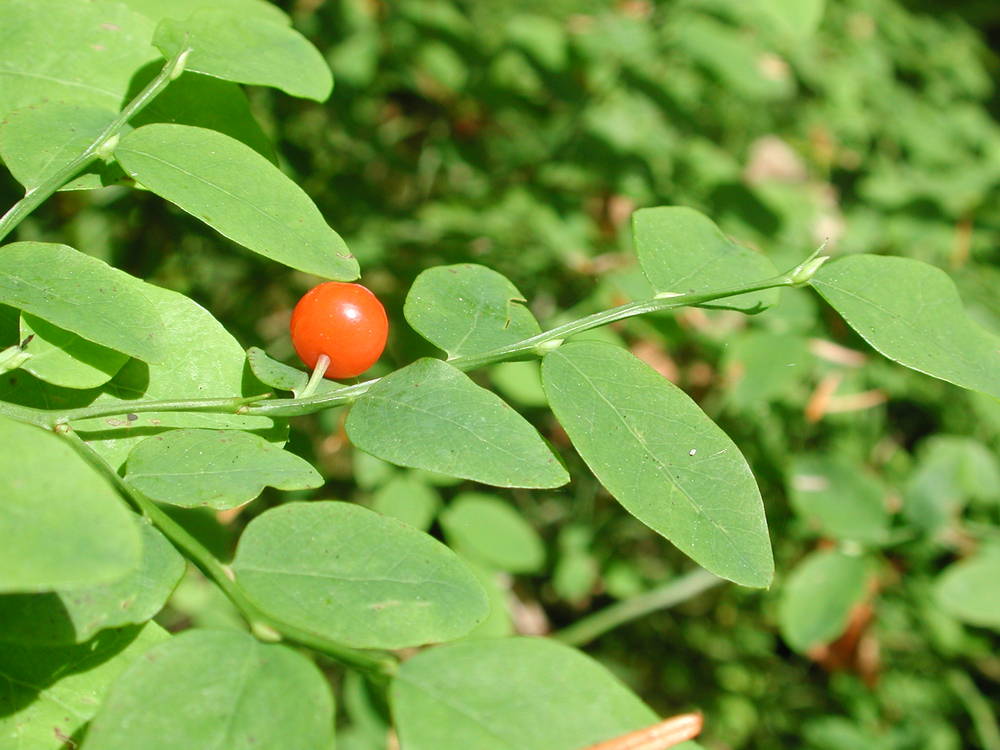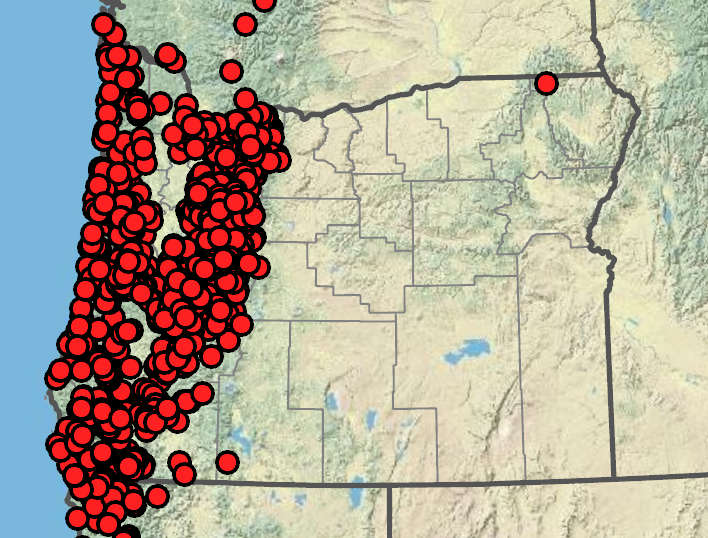Vaccinium hirsutum
Vaccinium parvifolium
red huckleberry
ovate to oblong-elliptic, 10–30 × 4–18 mm; thin;
margins usually entire, rarely minutely serrate;
tips usually rounded or sometimes acute;
surfaces abaxially glabrous to somewhat puberulent, adaxially glabrous but sometimes minutely puberulent along midrib.
solitary flowers in axils.
sepals 5;
calyx lobes green, glabrous;
petals 5;
corollas globose to urceolate, 4–6 × 3–5 mm; greenish yellow to pink, glaucous;
filaments ? anthers, glabrous.
6–10 mm in diameter, red, with a faint bloom.
=24.
Vaccinium hirsutum
Vaccinium parvifolium
Coniferous forests, often on decaying wood. Flowering Mar–Jul. 0–1600 m. Casc, CR, Est, Sisk, WV. CA, WA; north to AK. Native.
Some old, semi-evergreen leaves of V. parvifolium may be minutely serrate and shiny, while most leaves are entire and dull. Thus, when using the above key, care must be taken to examine younger leaves for proper identification.
Stephen Meyers
- Local floras:
BC,
CA,
OR,
WA
- Local Web sites:
CalFlora,
CalPhotos,
Flora NW,
PNW Herbaria,
Turner Photog.
WildflowerSearch
iNaturalist (observations)
USDA Plants Database
- LBJ Wildflower Center
- SEINet
- Plants of the World Online
- Encyclopedia of Life
- Wikipedia
- Google Image Search



